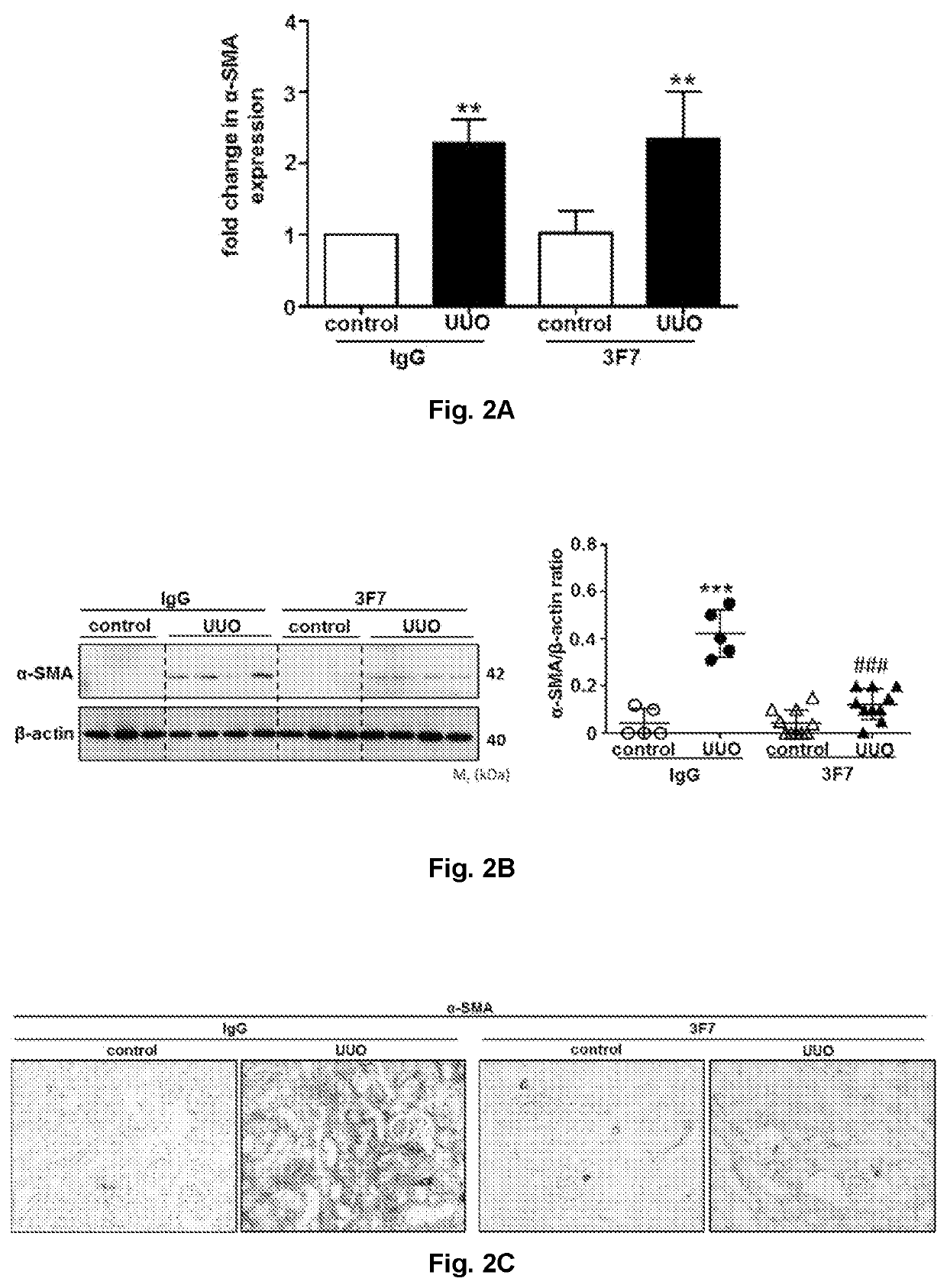Use of a FXIIa-inhibitor in the treatment of renal fibrosis and/or chronic kidney disease
a technology of renal fibrosis and chronic kidney disease, which is applied in the field of renal fibrosis and/or chronic kidney disease treatment with fxiia inhibitors, can solve the problems of not being approved for the treatment of renal fibrosis and/or chronic kidney disease, pirfenidone improving renal function but not improving podocyte injury, and not yet being shown to improve renal function
- Summary
- Abstract
- Description
- Claims
- Application Information
AI Technical Summary
Benefits of technology
Problems solved by technology
Method used
Image
Examples
example 1
umber of Atrophic Tubules / Reduced Tubular Dilatation
[0284]Mice were sacrificed 10 days after UUO as described in the method section above, and the extent of fibrosis was characterized by morphological and biochemical changes of the targeted organ. Serial sections (2 μm) of paraffin-embedded samples were stained with PAS. The severity of tubulointerstitial lesions was graded from 0 to 5 (normal, mild, moderate, advanced, or severe) using an activity index described previously (Moreth K., et al. J Clin Invest, 2010). For each animal at least 15 tubulointerstitial areas in the cortex and medulla were evaluated and graded for tubular dilatation and atrophy. Tubular injury scores for each mouse were calculated as the mean of the summed individual scores for each image. The results are represented in FIGS. 1A and 1B, wherein FIG. 1A represents the tubular injury score determined in the control and obstructed (UUO) kidneys from IgG- and 3F7-treated mice at day 10 post injury, and wherein F...
example 2
ng Effect on α-SMA Expression
[0285]During UUO, isotype (IgG)-treated control kidneys showed a marked increase in the expression of α-SMA, as evaluated by qPCR, western blotting, and immunohistochemistry 10 days after UUO. Inhibition of FXIIa by the 3F7 antibody significantly reduced α-SMA expression in UUO kidneys, as can be seen from FIGS. 2B and C representing the expression of α-SMA as assessed by western blotting (FIG. 2B), and immunohistochemistry (FIG. 2C). There was no reduction of α-SMA mRNA expression, as assessed by qPCR, in UUO kidneys treated with the 3F7 antibody (FIG. 2A).
example 3
ng Effect on Expression of Extracellular Matrix Proteins
[0286]Similarly, UUO greatly augmented the expression of extracellular matrix proteins, fibronectin (FN) and collagen I (Col I), while treatment with the 3F7 antibody markedly reduced the abundance of these components in obstructed kidneys 10 days after UUO, as can be seen from FIGS. 3A-C representing the expression of FN as assessed by qPCR (FIG. 3A), western blotting (FIG. 3B), and immunohistochemistry (FIG. 3C), and FIGS. 4A-C representing the expression of Col I as assessed by qPCR (FIG. 4A), measurement of hydroxyproline content (FIG. 4B), and immunohistochemistry (FIG. 4C).
PUM
| Property | Measurement | Unit |
|---|---|---|
| body temperature | aaaaa | aaaaa |
| concentration | aaaaa | aaaaa |
| molecular weight | aaaaa | aaaaa |
Abstract
Description
Claims
Application Information
 Login to View More
Login to View More - R&D
- Intellectual Property
- Life Sciences
- Materials
- Tech Scout
- Unparalleled Data Quality
- Higher Quality Content
- 60% Fewer Hallucinations
Browse by: Latest US Patents, China's latest patents, Technical Efficacy Thesaurus, Application Domain, Technology Topic, Popular Technical Reports.
© 2025 PatSnap. All rights reserved.Legal|Privacy policy|Modern Slavery Act Transparency Statement|Sitemap|About US| Contact US: help@patsnap.com



